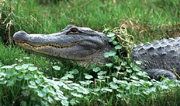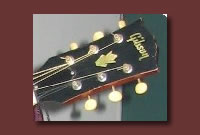 OK, so here is the rest of the Hawaii trip, albeit a bit long-winded. I do, however, reserve the right to go on a bit more in the future about things we may have seen or done, or impressions I had as a result of the experience. Consider yourselves warned.
OK, so here is the rest of the Hawaii trip, albeit a bit long-winded. I do, however, reserve the right to go on a bit more in the future about things we may have seen or done, or impressions I had as a result of the experience. Consider yourselves warned.
The Big Island.
After one week of music, fun and friendship on Maui, the group scattered to various places, mostly in the direction of home. However, Ed (one of the band guys and my friend since high school) and his wife, the Lovely Loretta, accompanied us to Kona, on the Big Island, and ultimately to Oahu.
The Kona Airport made the airport in Maui look like JFK Airport in New York. For example, one exits the plane on a movable stairway, rather than on a jet way. Once on the ground, I stupidly asked to be directed to the baggage carousel on which my bags would appear. “Over there,†was the response, as one of the airport employees pointed to the only carousel in the place. The airport is essentially an open-air quadrangle, surrounded by shops, restaurant/bar (I recommend the Bloody Marys) and a couple open-air “gates.â€
After doing the rental car drill, we headed north on Route 19 to our hotel. I had been advised to expect to see some lava between the airport and the hotel, but I had no idea that “some lava†was actually 21 miles worth of black lava as far as the eye can see. The only things that punctuated the black lava, were arrangements of pieces of white lava (I assume it is white lava, as I later saw it washed up on the beach) arranged to spell out people’s names or initials. We later learned that this is a curious custom that signifies that the person or persons who created the white on black arrangements will someday return to the island.
It’s easy to miss one’s hotel as there are no signs on the lava highway identifying hotels by name. Of course, that resulted in our having passed the place and having to double back to turn into a road that identified itself as a golf course, which was, in reality, the site of the Fairmont Orchid hotel, our island digs for the next few days.
The Fairmont Orchid Hotel is stupefying in its beauty, vastness, and hospitality. It boasts a meandering pool that is just short of the size of one of the Great Lakes, as well as a beautiful beach lagoon that is surrounded by large lava outpourings. A stream (with the occasional waterfall) runs through the grounds, and it is stocked with large, multi colored fish that seem to have been taught to show up in great numbers in response to people, particularly people with cameras.
Although the Fairmont Orchid resort truly is paradise, it is, to say the least, quite pricey. If you are shooting the moon on a Hawaii vacation, it is difficult to imagine a better place to stay. However, if you are traveling on anything resembling a budget, I suggest that you land on the Hilo side of the island where more reasonable accommodations, I assume, are available.
Given the limited amount of time we would have on the Big Island, we opted to take a twelve-hour tour that circles the entire island, with emphasis on spending the most time in the Volcanoes National Park. Unfortunately, several business conventions had booked every seat on every tour bus available. The only other alternatives were a helicopter tour, or doing the drive ourselves. The helicopter tour was quickly ruled out, as it would cost as much as $400+ per person. Frankly, I was glad it was so expensive, because I felt like climbing in a tourista helicopter about as much as I wanted a serious case of plantar warts.
We learned from a friendly cocktail waitress that taking the northern route (clockwise around the island) or the southern route (counter-clockwise) to get to the Volcanoes National Park did not matter, as the park was about equidistant from where we were staying. With that said, circling the island seemed to be the way to go. The waitress suggested the “clockwise†route, identifying it as the more scenic route. She said, “The other way is OK, if you like lava.â€
So, shortly after the crack of dawn (this was not a sleeping vacation), we assembled and headed north on Route 19. Soon, the lava fields were replaced by small towns and beautiful ranchlands. As the road neared the ocean on the northern coast, the scenery became even more stunning, what with the magnificent views of the pacific.
We happened on a magnificent place that is most-certainly not frequented by the big tour buses (they would not be able to navigate the narrow winding road off the highway). It was Laupahoehoe Park, and the beauty of the scenery (surf smashing into huge lava rock formations and a majestic coastal view to the north) was surpassed only by the story behind the place.
It seems that on April 1, 1946, the park was the site of a school, which was hit by a tsunami, sweeping 24 students and teachers out to sea and ultimately to their deaths. A granite memorial showing the names of those killed marks the spot where it all happened. A survivor describes the horrible event here.
We then turned off the main road for the four-mile trip to Akaka Falls State Park to take the walk through the lush tropical rain forest and to see the Akaka waterfall, which, at the time we were there, spilled massive amounts of water over the cliff into what appeared to be a perpetual rainbow caused by the mist. More pics.
Next was a visit to Hawaii’s Volcanoes National Park, which encompasses 333,000 acres from sea level to the summit of Mauna Loa, the world’s largest volcano (13, 677 feet above sea level). The park is also is also the site of Kilauea, the world’s most active volcano.
Lava still flows from Kilauea, and if one is “lucky,†it will be flowing somewhere near the road. If fooling around with molten rock is not your idea of a great time, there are plenty of cooled lava formations to see, often creating a Martian-like landscape, with steam rising spookily through holes in the ground from the molten rock a mile or so beneath the surface. Indeed the landscape is so otherworldly that NASA tested the Mars surface vehicle in Kilauea’s lava fields.
After our twelve-hour circle-the-island extravaganza, which included a few final hours in a heavy rain on a winding, narrow road, we arrived back to the hotel for some serious cocktails, local Kona ale and dinner by the beach.
The drive around the Big Island was long (and is best accomplished with two drivers – Thanks, Ed), but it was worth every minute of it, particularly when done with old friends.
Remember, if you leave from Kona to circle the island, go clockwise so you don’t miss the northern coast during the day. The cocktail waitress was absolutely right.
Oahu.
I must admit that, after having spent a week on Maui and a few days on the Big Island, flying into Honolulu was, by comparison, a bit like flying into Newark Airport. We boarded a shuttle bus and headed for the Hilton Hawaiian Village in Waikiki. Some of scenery in the vicinity of the Airport reminded me a bit of the not-so-beautiful outskirts of downtown Newark. However, before long we were in Waikiki, surrounded by massive hotels.
Our Hotel, the Hilton Hawaiian Village is one of the more massive ones. It is made up of a complex of several huge towers surrounding about a dozen restaurants, nine or ten bars and countless shops. It is quite overwhelming at first, but it becomes navigable with a bit of time and the use of a map.
Given that the main reason for visiting Oahu was to see the USS Arizona Memorial and the USS Missouri, shortly after our arrival, Ed scrambled over to the concierge to see about booking a tour for our only full day on the island. Fortunately, we grabbed the last four seats on a tour to see the very two places we had in mind.
That evening, having had more than a couple cocktails after our arrival (some of which came equipped with floating orchids in them), we had a simple dinner with a few more cocktails, did a bit of shopping and called it a day. As was the case for just about every night, I convinced myself that I would do a bit of reading, only to become unconscious after a paragraph or two.
The next morning we met the little tour bus at about 6:20 a.m. (Did I mention that this was not a sleeping vacation?). On the way to the Arizona Memorial, the tour guide gave us a large dose of the conspiratorial version of the Pearl Harbor attack (i.e. Roosevelt “knew†in advance of the attack but did nothing in order not to reveal our having broken the Japanese diplomatic codes and in order to counter the isolationist mood of much of the country at the time). Some of it made sense, but not all of it. What I did find particularly interesting was his account of the “investigations” and finger pointing after the attack, which resulted in the end of the career of Admiral Kimmel, the Commander of Pearl Harbor at the time (He was later exonerated of any wrongdoing). The parallels to today’s post September 11th events are downright eerie.
We must have taken the right tour, because our group was first in line to go to the Arizona Memorial. After watching a twenty-minute film, visitors board the navy-manned launch out to the Memorial. We were all reminded several times that the Memorial is the resting place of 1.177 men who lost their lives on December 7, 1941 and that people should behave accordingly.
Once on the Memorial, it is difficult to imagine how anyone could behave inappropriately. As I looked in the direction from which the waves of Japanese plans made their attack, I could not help but think about those men trapped five decks below the main deck on the Arizona during the nine minutes it took for the ship to sink.
I previously had read about the oil from the ship’s tanks that bubbles to the surface to this day (the ship was fully loaded with oil at the time of the attack), but actually seeing it percolate to the surface and spread out on the water in the sunlight gave me goose bumps.
From the Memorial, our next stop was the USS Missouri, one of the Iowa Class battleships. It’s huge. The teakwood deck is vast, and each link in the anchor chain weighs 110 pounds. However, it is the three main gun turrets, each housing three sixteen-inch guns, that dominate the view of the ship. Each one of those nine guns was capable of firing a shell roughly the weight of a Volkswagen more than 20 miles and could do so every two minutes or so.
I cannot imagine what it must have been like to be aboard that ship when its guns were firing to the maximum. I most certainly do not want to imagine what it must have been like to be at the receiving end of the Missouri’s fury as a couple dozen 2,000 pound shells zoomed overhead every two or three minutes.
The tour took us to many places on the ship, including the officers’ quarters, the enlisted men’s sleeping area, the bridge, the fire control center and to the dent on the starboard side of the ship created by a Kamikaze that smashed into the ship on April 11, 1944, as is shown in this picture taken just as the plane hit.
Perhaps the most impressive site on the ship (and largely the reason why it remains famous) is the deck on which General Douglas McArthur accepted the surrender of the Japanese Empire, thereby ending World War II. The exact spot is marked by a plaque mounted in the deck.
Following our visit to the Missouri, the tour guide drove through Punch Bowl Cemetery and other places in the city of Honolulu, but my mind was still back on the Arizona and the Mighty Mo. It was a once-in-a-lifetime experience.
The rest of the afternoon was spent drinking more drinks with flowers in them and pretending to read some more. After a fancy-schmancy dinner, a few more drinks and watching the Hilton’s very own fireworks display, it was time to say good-bye to Ed and Loretta, who were returning to Maui for a few more days, and to once again re-pack for the trip home.
The vacation was capped by spending a nine-hour flight sitting behind the “Let’s-All-Immediately-Push-Our Seats-Back-and Never-Sit Still†Family, obviously from some uncivilized part of the USA (they were catching connecting flights in Jersey).
I figure that it must have been a great trip, because after a minute or so, the Knucklehead Family didn’t even bother me.
 I read this story today over at Straight White Guy about a woman who was attacked while working in her garden by an alligator in excess of nine-feet long. The alligator dragged the 74 year-old woman the into the nearby lake. I have to tell you that the story sent a cold shiver down my spine.
I read this story today over at Straight White Guy about a woman who was attacked while working in her garden by an alligator in excess of nine-feet long. The alligator dragged the 74 year-old woman the into the nearby lake. I have to tell you that the story sent a cold shiver down my spine.
 OK, so here is the rest of the Hawaii trip, albeit a bit long-winded. I do, however, reserve the right to go on a bit more in the future about things we may have seen or done, or impressions I had as a result of the experience. Consider yourselves warned.
OK, so here is the rest of the Hawaii trip, albeit a bit long-winded. I do, however, reserve the right to go on a bit more in the future about things we may have seen or done, or impressions I had as a result of the experience. Consider yourselves warned. The Hawaii time change is still kicking my ass. However, returning to a heavy workload, getting too little sleep and having just now returned from an after-work retirement party (with a four-hour open bar) might also have something to do with my being too tired right now to write anything worth much of a damn.
The Hawaii time change is still kicking my ass. However, returning to a heavy workload, getting too little sleep and having just now returned from an after-work retirement party (with a four-hour open bar) might also have something to do with my being too tired right now to write anything worth much of a damn. Coming back from vacation to the work-a-day world is never easy, particularly after having spent two weeks on Maui, the Big Island (Hawai’i), and Oahu. In fact, if my time in Hawaii had not been so memorable, I would have forgotten about it all already, what with today being a miserable, cold, rainy, New Jersey day, filled with traffic, a lingering Circadian rhythm disruption, and a couple weeks of backed up work to be attended to.
Coming back from vacation to the work-a-day world is never easy, particularly after having spent two weeks on Maui, the Big Island (Hawai’i), and Oahu. In fact, if my time in Hawaii had not been so memorable, I would have forgotten about it all already, what with today being a miserable, cold, rainy, New Jersey day, filled with traffic, a lingering Circadian rhythm disruption, and a couple weeks of backed up work to be attended to. On Monday, we will be flying off to Hawaii for some sun, fun, beer, booze, and music – lots of music. This marks the second reunion of the band I played with in the sixties. We got together two years ago, with instruments, in
On Monday, we will be flying off to Hawaii for some sun, fun, beer, booze, and music – lots of music. This marks the second reunion of the band I played with in the sixties. We got together two years ago, with instruments, in 



